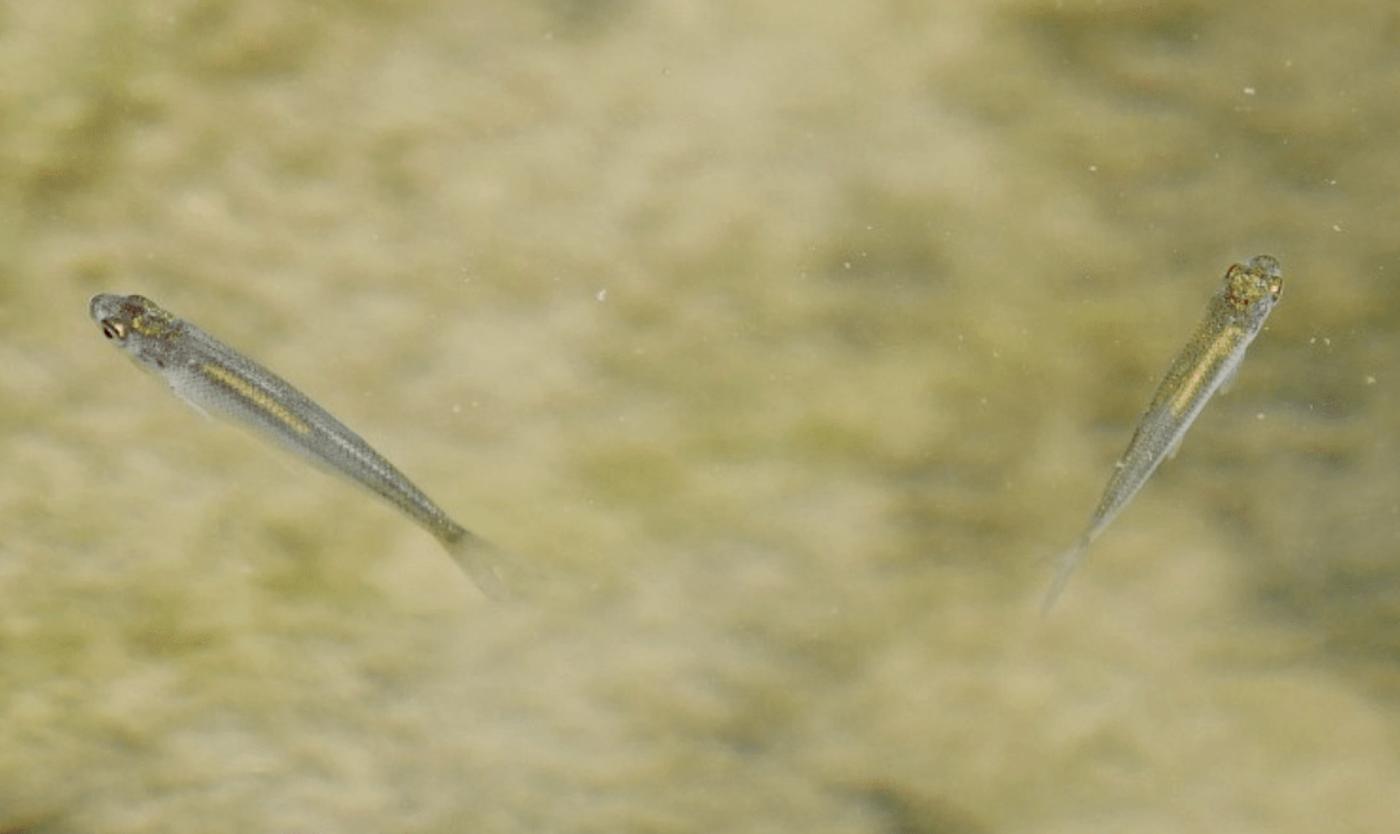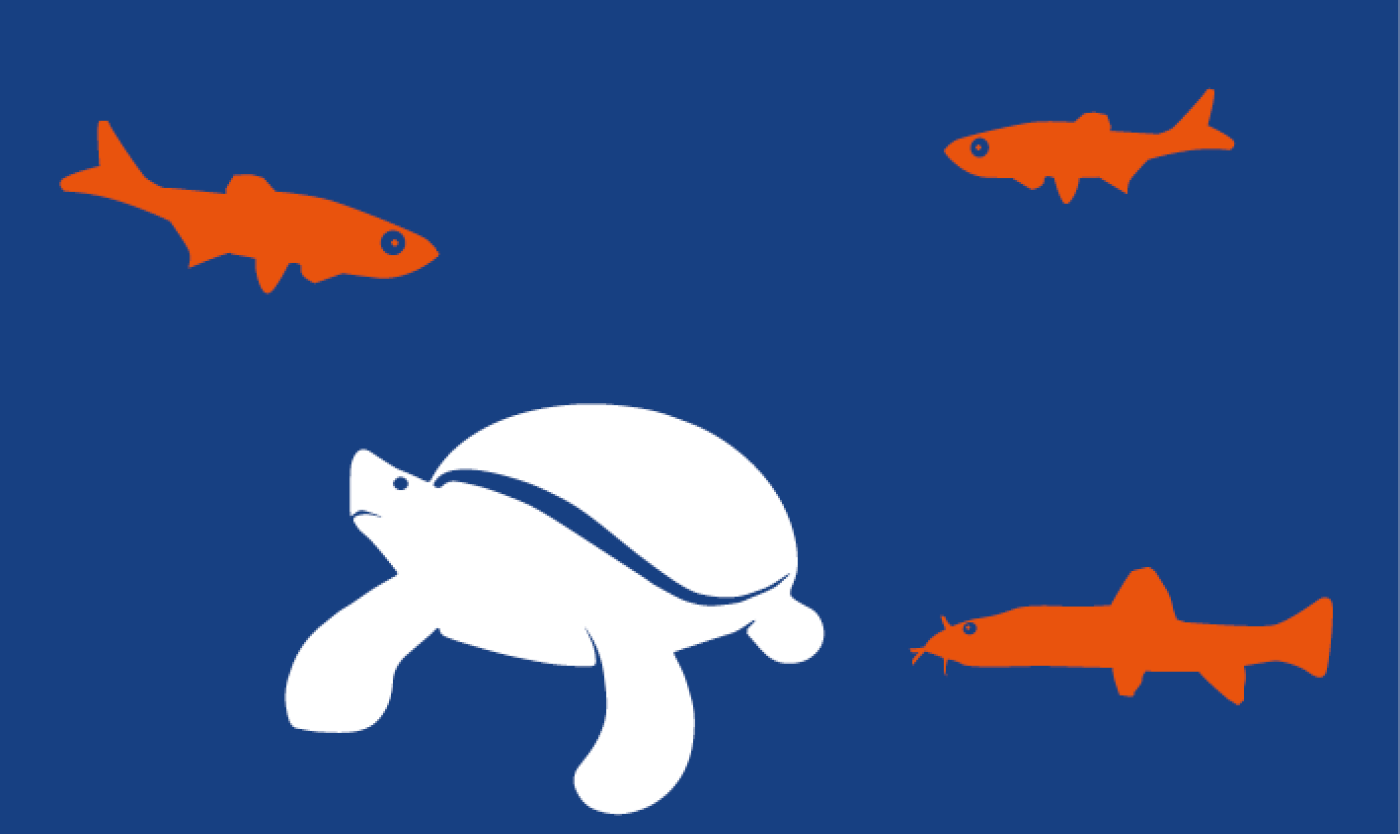The sunbleak
The sunbleak (Leucaspius delineatus) is a nippy, flattened fish with silvery flanks. In Old German it is also called ‘Moderlose’, which translates as ‘motherless’ fish. It was given this name because it spontaneously appears in ponds and pools everywhere. For a long time, it was therefore thought to come from the ground, hence, ‘motherless’.


The stone loach
Apart from the sunbleak, there is another fish that lives in our pond, the stone loach (Barbatula barbatula). A small fish which, like the sunbleak, belongs to the carp family. It is difficult to spot because it is mainly active at night, when it hunts for small water insects and worms hiding between pebbles and stones. This fish is indigenous to Belgian waters and has a smooth skin without visible scales. Its yellowish-brown colour and small black dots make the perfect camouflage.
Turtles
The pond is also home to a number of red-eared slider turtles (Trachemys scripta elegans) and Cumberland turtles (Trachemys scripta troosti). The latter originally came from North America, but because they are sometimes dumped in the wild, they can now be found in many ponds, including the one at the Braem Building and in many other parks around Brussels.

Unlike other exotic species that reproduce and thus pose a growing threat to native species, we do not have to fear baby turtles. The Belgian climate is too cold for that. However, these turtles can cause a lot of damage in natural ecosystems because they are aggressive predators that will eat anything they can fit into their mouths. For the time being, an import ban seems sufficient to prevent them from spreading, but it is feared that climate change will lead to the reproduction of this species in Europe. Therefore, we are considering removing the turtles from the VUB pond.
Pond features
In the years ahead, we aim to redesign this area with two goals. Firstly, to maintain and strengthen the ecological function and the role that this pond can play in boosting biodiversity. Secondly, to partially restore its hydrological function, namely as a rainwater buffer. The pond can serve as an overflow when (excess) rainwater cannot infiltrate or be reused elsewhere. We intend to look across the boundaries of various disciplines to see how we can best achieve these two aims in the coming years.
